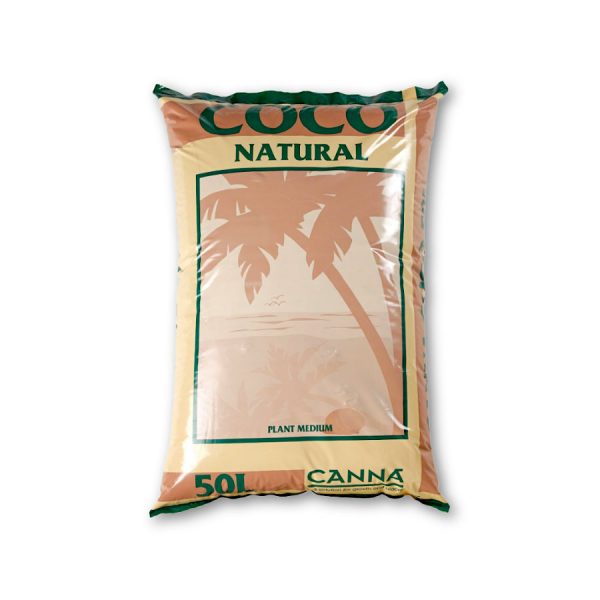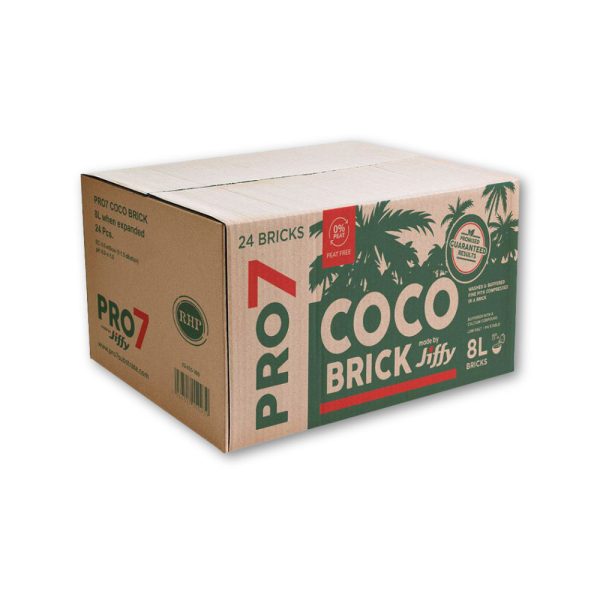Coco
Coco in hydroponics is becoming increasingly popular. Also known as coco coir, coco is an organic growing medium used in hydroponics as a plant substrate. It offers superb water and oxygen retention properties and promotes healthy root systems and excellent yields at harvest. It’s a very friendly medium, so it’s ideal for all experience levels.
Coco behaves quite similarly to soil and allows hydroponic growing to occur without the grower having to buy the whole set of equipment or a complete system. But it does involve a bit of care and attention to ensure that you end up with sturdy plants with strong roots and healthy development.
Coco in hydroponics is often in the form of compressed bricks or briquettes. So it has to be hydrated and washed before use. Follow the instructions with every pack that you buy.
One disadvantage of coco coir is that it contains a high amount of salt, which could be toxic to your plants. So you must rinse your coco coir in pH-balanced water to remove this salt. Rinse until the water runs clear, and the tannins have washed away.
Some coco coir manufacturers wash and remove all the salts before their final processing, and coco treated this way is slightly more expensive to buy.
Coco coir is inert, without nutrients, and only has trace amounts of essential minerals. It will typically have high levels of potassium and phosphorus, but it will only contain trace amounts of calcium, copper, chlorine, iron, boron, magnesium, manganese, nitrogen and zinc. So it will usually require some nutrient supplementation.
Traditional hydroponic supplements contain large doses of potassium and phosphorus, but these are not needed when using coco coir. Instead, look for a coco-specific nutrient supplement. The chief nutrients needed to supplement will be calcium and magnesium.
Coco coir is an excellent source of oxygen because of the coarseness of its fibres, providing functional air pockets. But when you rehydrate coco coir, it tends to clump together. To open up the air pockets and enhance the oxygen rates, break up any of these clumps and make the coco coir a bit more fluffy again before using it in your hydroponic system. Some growers like to add perlite or recycled glass, as this can also improve the aeration.
Coco coir is very hospitable to the friendly bacteria which are increasingly made use of in hydroponics. It makes an ideal breeding ground for these tiny beneficial microorganisms like bacteria and fungi. Although it’s worth mentioning that these little creatures are not naturally found in coco coir when you buy it, you’ll need to introduce these bacterial marvels into your system’s substrate through supplements or by using organic fertilizers and nutrients. Mixing earthworm castings into your soil is another good way to encourage these microorganisms to breed and multiply.
-

Atami Cocos Substrate
£16.95 Add to basket -

Canna Coco Natural 50L
£15.95 Add to basket -

Canna Coco Professional Plus 50L
£19.95 Add to basket -

Ecothrive Coco Lite 70/30 50L
£18.95 Add to basket -

Jiffy Pro7 Coco Brick 8L
From: £2.50 Select options This product has multiple variants. The options may be chosen on the product page -

Plant Magic 60/40 50L
£16.95 Read more -

Plant Magic 70/30 50L
£15.95 Read more -

Plant Magic Coco Bricks
£44.95 Add to basket -

Plant Magic Coco Supreme 50L
£15.95 Add to basket